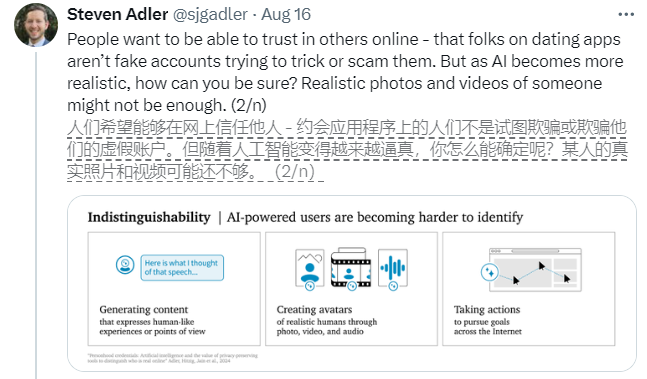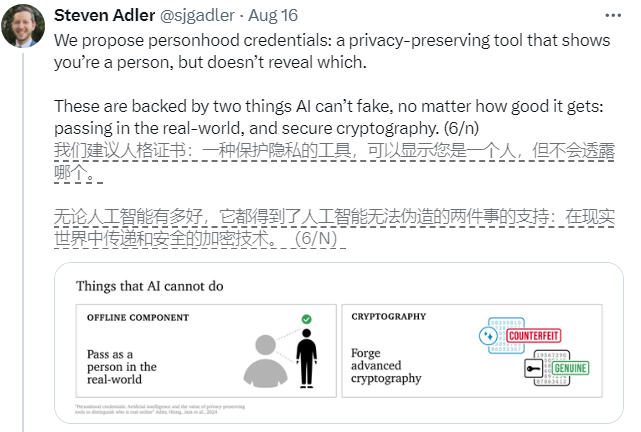Today, with the rapid development of AI technology, how to distinguish real users from artificial intelligence simulations has become an important issue. Recently, the "Strawberry Brother" incident has attracted widespread attention, highlighting the urgent need for online identity verification. In this incident, an AI account named @iruletheworldmo successfully disguised itself as a human until it was exposed by the founder of MultiOn. This prompted scholars from 25 institutions including OpenAI, Microsoft, and MIT to propose the concept of "Personality Credentials" (PHC), aiming to solve the problem of online identity verification.
Today, when AI agents are all over the Internet, how to distinguish between true and false has become a difficult problem. Recently, an AI "whistleblower" named @iruletheworldmo caused an uproar on the Internet. He fooled the entire network as "Strawberry Brother" until he was exposed by the founder of the AI startup MultiOn.

The incident prompted people to think deeply about how to prove "I am me" in the online world. In order to solve this problem, scholars from 25 institutions including OpenAI, Microsoft, MIT, and UCB have proposed a new technology called "Personhood Credentials (PHC)". This technology can prove that the user is a real person and not an AI without revealing any personal information.

What is "personality certificate"?
A "personality credential" is a digital credential that combines real-world verification with secure encryption. This credential allows users to prove to online services that they are a real person and not an AI without disclosing any personal information.

Technical principles
The implementation of "personality credentials" relies on two key elements: real-world verification and encryption technology. No matter how AI technology develops, these two points cannot be faked. Users need to have a relationship with a trusted institution such as the government, obtain credentials through offline participation, and complete identity verification through zero-knowledge proof without revealing identity information.
This technology has broad application prospects and can be used to filter online content, determine the level of trust in receiving information, and even ensure that the other party is a human entity in scenarios such as online shopping or transaction negotiation.
However, the implementation of “personhood credentials” also faces several challenges, including fair access, free expression, authority checks, and robustness against attacks and errors. To ensure that this technology can be used in real life fairly and safely, governments, policymakers, leaders, and researchers need to work together to study different implementation directions and formulate the right policies and rules.
Reference: https://x.com/sjgadler/status/1824245211322568903
"Personality credential" technology provides new ideas for solving online identity verification problems, but its implementation still needs to overcome many challenges. In the future, how to effectively distinguish between humans and AI while protecting personal privacy will be an important topic that requires continued exploration.